#Safavid Dynasty
Explore tagged Tumblr posts
Text

An Afro-Iranian Soldier, unknown artist, last quarter of 17th century
#art#art history#portrait#portrait painting#poc in art#Islamic art#Persian art#Iranian art#Safavid Dynasty#17th century art#oil on canvas#Davidsmuseum
153 notes
·
View notes
Text

Pari Khan Khanum (1548–12 February 1578, aged 29) was a Safavid princess, the daughter of the Safavid king (shah) Tahmasp I (r. 1524 – 1576) and his Kumyk consort, Sultan-Agha Khanum. An influential figure in the Safavid state, Pari Khan Khanum was well educated and knowledgeable in traditional Islamic sciences such as jurisprudence, and was an accomplished poet.
She played a crucial role in securing the succession of her brother Ismail II (r. 1576–1577) to the Safavid throne. During Ismail's brief reign, her influence lessened, but then increased during the reign of Ismail's successor, Mohammad Khodabanda (r. 1578–1587), even becoming the de facto ruler of the Safavid state for a short period. She was strangled to death on 12 February 1578 at Qazvin because her influence and power were perceived as dangerous by the Qizilbash.
16 notes
·
View notes
Text
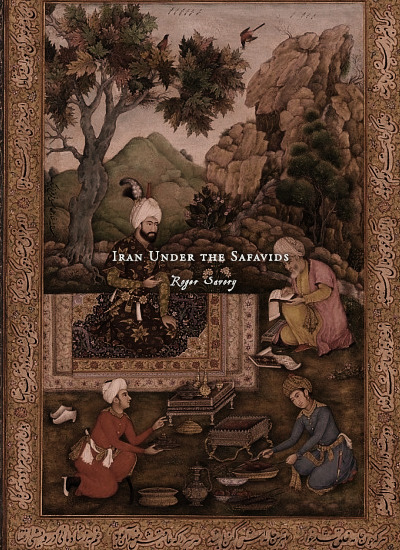
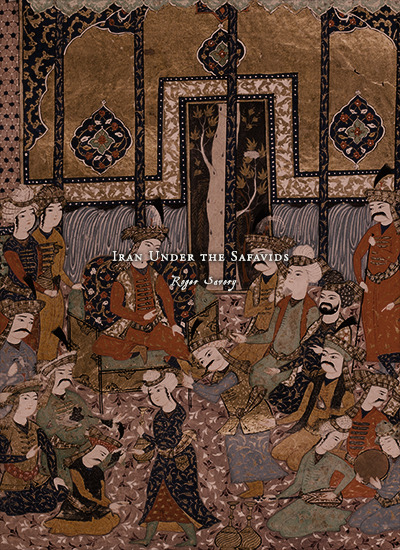
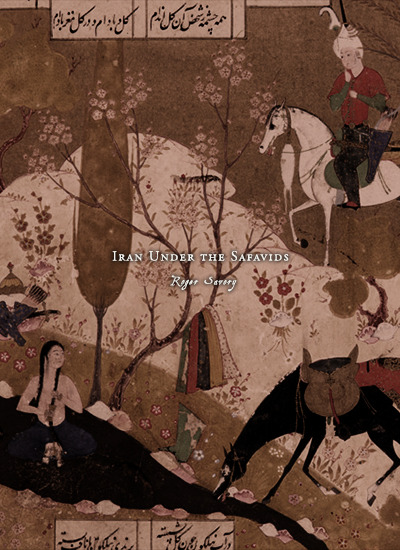
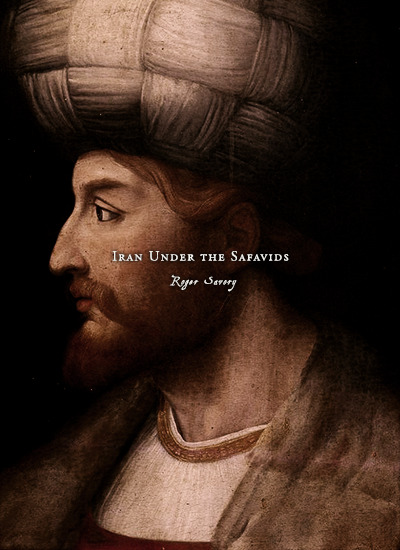
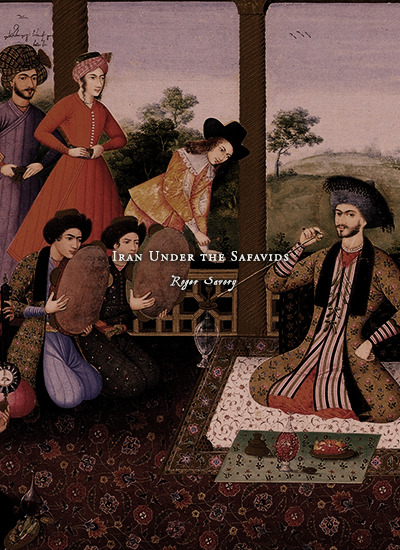
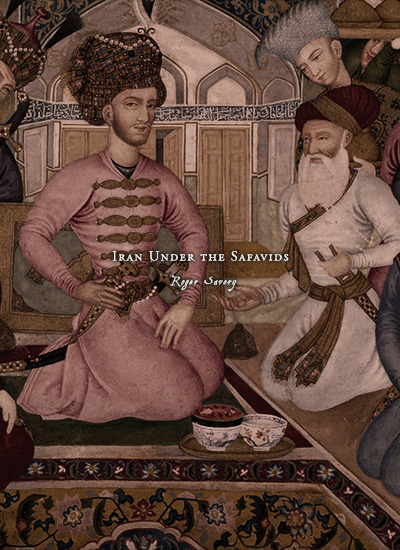
Favorite History Books || Iran Under the Safavids by Roger Savory ★★★★☆
The announcement by Shāh Ismāʿīl at Tabriz in 1501 that the Ithnā ‘Asharī, or “Twelver”, form of Shi‘ism was to be the official religion of the newly established but not yet consolidated Safavid state was the single most important decision taken by Ismāʿīl. As previously noticed, Ithnä ‘Asharī Shi‘ism lay at the heart of one of the bases of the power of the Safavid leaders, namely, their claim to be the representatives on earth of the 12th Imam or Mahdl (if not the Imäm himself) ; the cult of ‘Alī had been inextricably bound up with the development of Iran of Sufism, or Islamic esotericism, from at least the thirteenth century, and the position of murshid-i kämil, or perfect spiritual director, was the second basis of the power of the Safavid leaders; finally, by asserting that ‘Alī’s younger son, Husayn, married the daughter of Yazdigird III, the last of the Sasanid kings, Shī ‘īs had linked the family of ‘Alī with the ancient Iranian monarchical tradition, and the divine right of the Iranian kings, deriving from their possession of the “kingly glory”, was the third basis of the power of the Safavid shahs. Ithnā ‘Asharī Shi‘ism was therefore the most important element in Safavid religious propaganda and political ideology. … What were the benefits deriving from Ismāʿīl’s action? First, it harnessed the driving power of a dynamic religious ideology in the service of the new state, and thus gave the latter the strength to surmount its initial problems, and the momentum to carry it through the serious crises which faced the state after the death of Shāh Ismāʿīl I in 1524. Second, it clearly differentiated the Safavid state from the Sunnī Ottoman empire, the major power in the Islamic world in the sixteenth century, and thus gave it territorial and political identity. It can, of course, be argued that the establishment of a militant Shī‘ī state on the Ottoman border was an act of provocation which made conflict with the Ottomans inevitable, and to that extent militated against the interests of Iran. It is improbable, however, that Ottoman imperialist aspirations would not have embraced Iran during the sixteenth century, the period of the greatest expansion of the Ottoman empire, whether or not the Safavid revolution had succeeded; the fact that it did succeed gave the Safavid state at least a chance of survival against the most formidable military machine ever seen in the world of Islam. In short, the imposition by the Safavids of Ithnā ‘Asharī Shi’ism as the official religion of the state had the effect of producing a greater awareness of national identity, and thus of creating a stronger and more centralised government.
#litedit#historyedit#safavids#iranian history#history books#asian history#history#nanshe's graphics#safavid dynasty
18 notes
·
View notes
Text

A Stallion by Habiballah of Sava. 1601-1606 CE. Safavid Iran.
The Metropolitan Museum of Art.
#Habiballah of Sava#iranian history#Iran#persia#Safavid#Safavid dynasty#early modern period#early modern history#the metropolitan#the metropolitan museum of art#the Met#middle eastern history#art#culture#animals in art
6 notes
·
View notes
Text
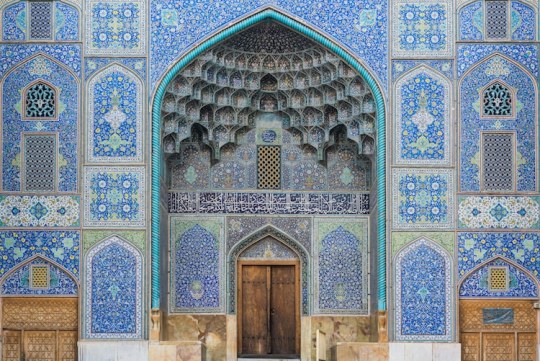
The facade of Sheikh Lotfollah Mosque, a masterpiece of the Iranian architecture, built between 1602 – 1619 during the Safavid dynasty
(Photo: Stock Photos from Athikhom Saengchai/Shutterstock)
#athikhom saengchai#photographer#shutterstock#facade#architecture#muslim architecture#sheikh lotfallah mosque#mosque#iranian architecture#safavid dynasty#culture
6 notes
·
View notes
Text
Shah Mosque, completed in 1629
Safavid dynasty
Isfahan, Iran

Pinterest
48 notes
·
View notes
Photo
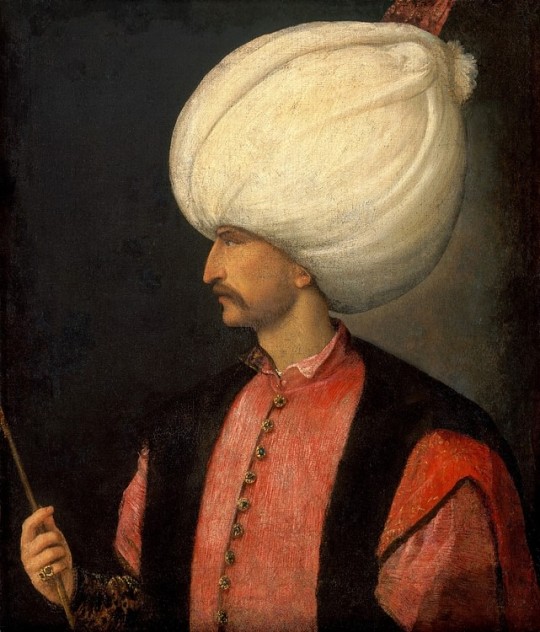
Suleiman the Magnificent
Suleiman the Magnificent (aka Süleyman I or Suleiman I, r. 1520-1566) was the tenth and longest-reigning sultan of the Ottoman Empire. Hailed as a skilled military commander, a just ruler, and a divinely anointed monarch during his lifetime, his realm extended from Hungary to Iran, and from Crimea to North Africa and the Indian Ocean. As he engaged in bitter rivalries with the Catholic Habsburgs and the Shiite Safavids, he presided over a multilingual and multireligious empire that promised peace and prosperity to its subjects.
Early Life
Suleiman was born in 1494 or 1495 in Trabzon, on the Black Sea coast. His father Selim served there as provincial governor, and his mother Hafsa was a concubine in his father's harem. Suleiman grew up in a multiethnic, multireligious town. While he led a privileged life, he also lived in a district where contagious diseases and food scarcity were rampant, even for the upper classes. He received an elite education under the supervision of tutors, including a strong poetic formation. He also received martial training, and he remained an avid and skilled horseman and hunter to the end of his life.
Suleiman's adolescence and youth were spent under the shadow of his father Selim, a violent, overbearing man. As he reached puberty, like other Ottoman princes, he became eligible for service as district governor. Following a tense negotiation between his father and the palace, he was appointed to Caffa, in the Crimean Peninsula. His father Selim subsequently used Caffa as a center of operations in his bid to replace the ruling sultan, Bayezid II (r. 1481-1512). After becoming sultan in 1512, Selim I (r. 1512-1520) killed his brothers and nephews, stopped the advance of the millenarian Safavid movement into the Ottoman territories by defeating its leader Ismail in 1514, and occupied the Mamluk Sultanate of Egypt in 1516-17.
After his father Selim came to the throne, Suleiman was given another district governorship in western Anatolia. The resources at his disposal increased considerably, as he came to preside over a crowded household as the heir apparent. During Selim's campaigns, he acted as his father's proxy by relocating to Edirne, the gateway to the Balkan provinces, where he became acquainted with the management of the empire at the highest level.
These were the years during which Suleiman began stepping into the limelight of Ottoman political and cultural life. He began writing poetry, a sign of intellectual maturity as well cultural refinement. He also began having children with his concubines, securing the reproduction of the Ottoman dynasty, and transitioning from adolescence into fatherhood.
Author Promotion
Continue reading...
35 notes
·
View notes
Photo

Persian Warrior Gloves, possibly from Safavid Dynasty in the 1500s.
384 notes
·
View notes
Note
okay i know that you said you're not the greatest history buff, but i realy wanted to know your take on the Safavid kingdom as a representation of a middle eastern community..? if you've read enough manhwas you probably have seen some stupid stereotypes and it realy sucks. god i feel like i'm bothering you asking this i mean we don't know much about safavid .. you don't have to answer this :D
of course! i'll try my best to speak about it! the floor is also open to anyone who has their own additions!
So. We all know that ASM borrows inspiration from existing territories and conflict from the 1700s all the way up to the late 1800s, right? Well get ready for this.
If we use this same research model, we'll come to find that the Safavid Dynasty also existed in Iran back in the 16th century. Which means we have a direct reference point we can compare the (manhwa) Safavid Kingdom to! (just remember to take it with a few grains of salt. We're dealing with 400+ years of history here!)

In my humble opinion (as someone who isn't part of the middle-eastern community btw), I feel like ASM does a pretty fair job at representing the middle east via Safavid/Pasha Family. The biggest hurdle just comes from the fact we haven't seen much of them yet.
The first thing I noticed was the architecture. During Halima's trip back home to Safavid we get to see ORKA's depiction of the Kingdom. As you can see below, the inspiration behind the Bahjat's Palace is pretty directly linked to the Meidan Emam in Isfahan, a royal mosque from the Safavid Era!

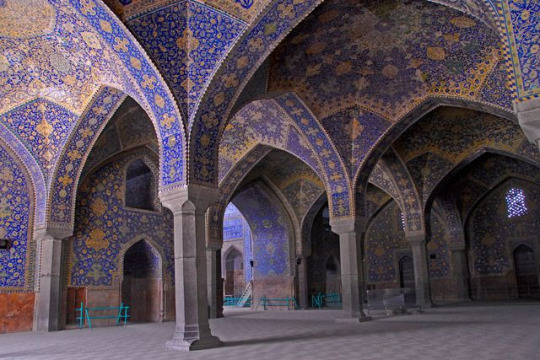



Unfortunately, the establishing shot of the city isn't as easy to compare, with the introduction of modern architecture. But if we look at Yazd, an untouched city in Iran, we can see the traces of inspiration with just a few minor discrepancies: minaret, domed mosques, earthen town houses.
We also get these small fleeting moments that really make the characters feel like they're from another country. For example, Nasir, Ali's escort can be seen wielding a curved sword as opposed to a European broadsword. Later, Nora mentions that it is a shamshir, a type of Persian scimitar.


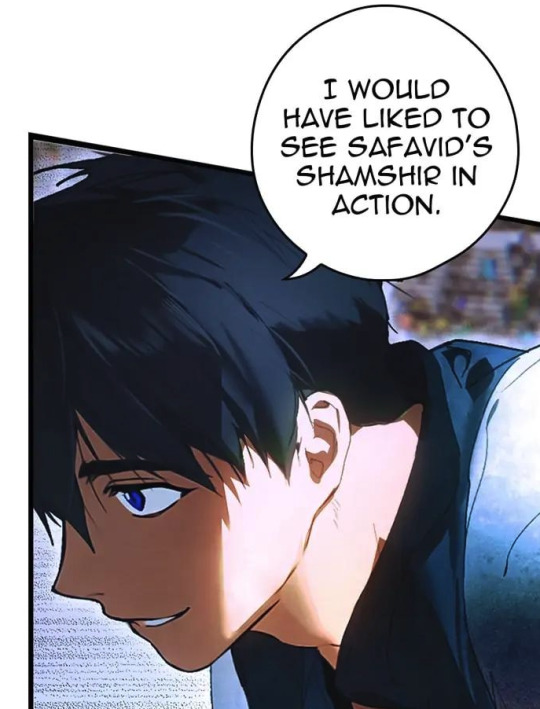
even these small details really make for great world building. Honestly, I'd love to see these props make a comeback in future scenes. Like can you imagine seeing one of the rugs Ali brought in the Neuschwanstein Castle?
Now to finally get to the part you've probably been waiting for. The clothes.


Unfortunately, I'm not as well versed in royal fashion in the Middle East so I had a hard time identified the style of dress.
When we compare the real Shahs of the Safavid Dynasty, we'll see that their fashion of choice changed greatly over the course of the ruling. I couldn't pinpoint exactly who, when or which specific culture ORKA is referencing here. But we do see some elements from Tahmasp I (feathered turban, ornate belt, embroidered textiles). Please correct me if I've made any errors here. I'm totally not confident in my Middle Eastern fashion history.
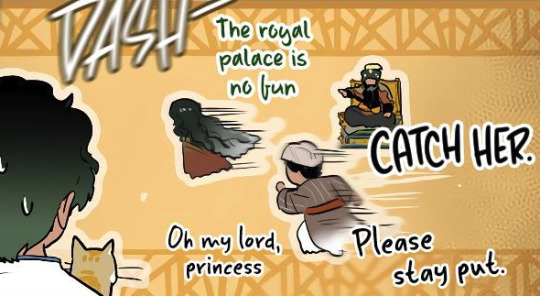
But above all else, I really just enjoy how the Pasha family is written and designed. I think we've seen stereotypes in all forms of media where middle easterners are portrayed... not so well.
In ASM, they're just the Pashas. As a foreign kingdom, they pose a threat against the Empire, but they're not evil. The King seems to be as tired with Halima's bullshit as the Empress is with Theo. Even Nasir has his own occasional dialogue, exasperated by Ali's behavior. And if you've read the same comics I have, we're all too familiar with the "dangerous and stoic middle-easterner" stereotype.
IMO, we've seen "foreign" characters in manga/manhwa that are usually boiled down to one of three types: the socially insensitive clowns/perverts, the murderer, or the alien that somehow has white skin and hair. but I personally find it a breath of fresh air how ASM leans full into the concept of darker skinned characters with dark hair and actual rounded personalities.
This shouldn't be such a high bar to reach, but ORKA has one again reached it.
#a stepmother's marchen#the fantasie of a stepmother#ali pasha#halime pasha#stepyapping#askstepmarchen
34 notes
·
View notes
Text

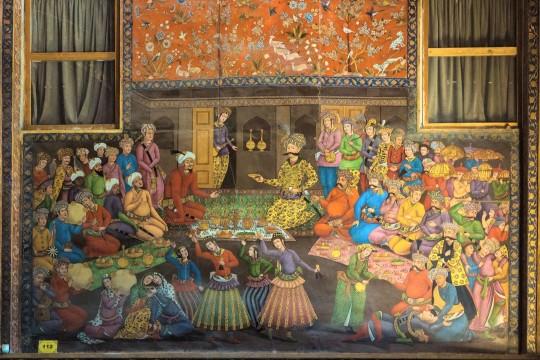

Wall paintings from Chehel Sotoun Palace; Safavid dynasty Iran, 18th century
"Shah Abbas II’s reception feast in honor of Nader Mohammad Khan, King of Turkestan"
"Abbas the Great and Uzbek ruler Vali Muhammad Khan"
"Shah Tahmasb I receiving King Homayun of India"
45 notes
·
View notes
Note
agree with everything you said but iran is not imperialist. ethnonationalist theocracy sure but where are you getting imperialism from. empire =\ imperialist, would you call russia imperialist?
The Iranian state is not even half a century removed from being a formal empire: Pahlavi Iran was "The Imperial State of Iran" and recalled imperial possessions lost to Tsarist Russia another century prior. But setting aside nomenclature, which is fickle and floats—It's exactly that ethnonationalism which forms the logic of what I have been calling imperialism, even if there are not formal imperial possessions involved.
The consolidation of "irani" national identity through the 19th century went together with heightening of the core's exploitative and even colonial relationship to its periphery. This relationship can be traced back centuries to the earliest period of "reclaimed" Iranian rule of the region in the case of e.g. the forced displacement of Kurds to Khorāsān under early 16th century Safavid shahs. With the latest, industrial stage of Iranian statecraft and nation-building, the economic nature of this exploitation has been accelerated and what autonomy the peripheries previously had is restrained by the growing military apparatus the IRI commands.
The country's oil reserves are heavily concentrated in the province of Khuzestan, home to the city of Ahwaz/Ahvaz and most of the nearly two million or so Iranian Arabs. This is a region that is obviously of great economic significance. Strikes in 1978 played a major role in precipitating the fall of the Pahlavi dynasty, and in a pattern that will be familiar to the people who know, many of the communists and worker's parties responsible were put down by the subsequent IRI that owed its existence to them. Labour rights in the region remain suppressed; little of the wealth extracted from factories there is seen by the ethnic minorities that compose much of the working population, making its way instead to the private monopolies of the core; Ahwaz itself is sickeningly and dangerously polluted as reward for the riches it yields. What is this exploitation but imperialism?
And what of the constant harassment and material extortion of Kurdish kolbars carrying goods across the mountains in Kurdistan? The pāsdārān/IRGC often "confiscate" the possessions of people working to move essential wares within their families and communities, if they don't kill them outright, citing border violations if they make any excuses at all. This only exacerbates the ongoing economic deprivation of both Rojhilat/Iranian Kurdistan and Kurds in nearby parts of greater Kurdistan, whose economies and societies are disrupted by the border. Seems pretty imperialist to me.
Meanwhile, the national hero Qassem Soleimani is in fact reviled by many of the people who actually lived in those regions of Syria and Iraq that were his remit. He was known not only for his opposition to US imperialism and campaigns against Da'esh, but also for overseeing violence against protesters in the region and serving as the figurehead of Iranian intervention in local people's movements. Exertion of military force on other nations beyond the boundaries of the state, in the interest of developing its political and economic sphere—what would you call this?
Don't misunderstand me: the solution is not reactionary intervention in Iran, and anyone who tries to leverage these facts to advocate for US-collaborationist separatism is just a would-be comprador. But the political economy of Iran relies on an ongoing imperialism that is only the latest stage of an imperial legacy.
#ask answer#vatan#iran#no comment on the russia part of the ask#whereof one cannot speak thereof one must be silent etc etc
17 notes
·
View notes
Text

Tile with the figure of an archer
Iran, Safavid dynasty, ca. 1650-1700 AD
British Museum
19 notes
·
View notes
Text

Tile Panel. Persia(Iran), Safavid dynasty. 17th Century.
The Metropolitan Museum of Art.
#art#culture#history#early modern period#early modern history#iranian art#iranian#iran#Persia#persian#safavid#the metropolitan#the metropolitan museum of art
4 notes
·
View notes
Photo

The Shibanid (Shaybanid) Conquests, 1500-1510.
by u/Swordrist
This is my attempt at covering an underapreciated area of history which gets next-to no coverage on the internet. Here's some historical context for those uneducated about the region's history:
Grandson of the former Uzbek Khan, Abulkhayr, Muhammad Shibani (or Shaybani) was a member of the clan labeled in modern historiography as the Abulkhayrids, who were one of the numerous tribes which were descended from Chingis Khan through Jochi's son, Shiban, hence the label 'Shibanid' which is used not only in relation to the Abulkhayrids who ruled over Bukhara but also for the Arabshahids, bitter rivals of the Abulkhayrids who would rule Khwaresm after Muhammad Shibani's death and for the ruling Shibanid dynasty of the Sibir Khanate.
After his grandfather's death in 1468, Shibani's father, Shah Budaq failed to maintain Abulkhayr's vast polity in the Dasht i-Qipchak, as the tribes elected instead the Arabshahid Yadigar Khan. Shah Budaq was killed by the Khan of Sibir and Shibani was forced to flee south to the Syr Darya region when the Kazakhs returned and proclaimed their leader, Janibek, Khan. Shibani became a mercenary, serving both the Timurid and their Moghul enemies in their wars over the eastern peripheries of Transoxiana. After the crushing defeat of the Timurid Sultan Ahmed Mirza, Shibani succeeded in attracting a significant following of Uzbeks which formed the powerbase from he launched his conquests.
Emerging from Sighnaq in 1499, Muhammad Shibani captured Bukhara and Samarkand in 1500. In the same year he defeated an attempt by Babur (founder of the Mughal Empire) to take Samarkand. Over the course of the next six years, Shibani and the Uzbek Sultans conquered Tashkent, Ferghana, Khwarezm and the mountainous Pamir and Badakhshan areas. In 1506, he crossed the Amu-Darya and captured Balkh. The Timurid Sultan of Herat, Husayn Bayqara moved against him however died en-route and his two squabbling sons were defeated and killed. The following year he crossed the Amu-Darya again, this time vanquishing the Timurids of Herat and Jam and subjugating the entirety of Khorasan east of Astarabad. In 1508, he raided as far south as Kerman and Kandahar, however he moved back North and launched two campaigns against the Kazakhs, but the third one launched in 1510 ended in his defeat and retreat to Samarkand at the hands of Qasim Sultan.
The Abulkhayrid conquests heralded a mass migration of over 300 000 Uzbeks to the settled regions of Central Asia from the Dasht i-Qipchak. They heralded the return of Chingissid political tradition and structures and the end of the Persianate Timurid polities which had dominated the region for the last century. It forever after changed the demographic of the region. His reign was also the last time Transoxiana was closely linked with Khorasan, as following the shiite Safavid conquests the divide between the two regions would grow into a permanent one.
In 1510, Shibani faced his end when he moved to face Ismail Safavid, who was making moves on Khorasan. Lacking the support of the Abulkhayrid Sultans, who blamed him for their defeat against the Kazakhs earlier that year, he faced Ismail anyway, where he was defeated, killed and turned into a drinking cup.
Shibani's death caused a complete reversal of the Abulkhayrid fortunes. Khorasan and the rest of his empire fell under Safavid dominion. However in Khwaresm, Sultan Budaq's old rivals the Arabshahids expelled the qizilbash and founded their own Khanate, based first in Urgench and then Khiva. In Transoxiana, Babur lost the support of the populace when he announced his conversion to Shiism and his loyalty to Shah Ismail, which allowed the Abulkhayrids to rally behind Shibani's nephew, Ubaydullah Khan and expel the Qizilbash. Nonetheless, the Abulkhayrids would never again hold as much power as they briefly did when led by Muhammad Shibani Khan.
40 notes
·
View notes
Text
2am thoughts be like "okay but what if i brought back the safavid dynasty in the mojave desert and led it as the shadow of god on earth? it would probably work because the ottomans arent real anymore"
184 notes
·
View notes
Text

Album of Drawings of Flowers Made by Shafi Abbásí, Isfahan School, Safavid dynasty 1670-1671
4 notes
·
View notes